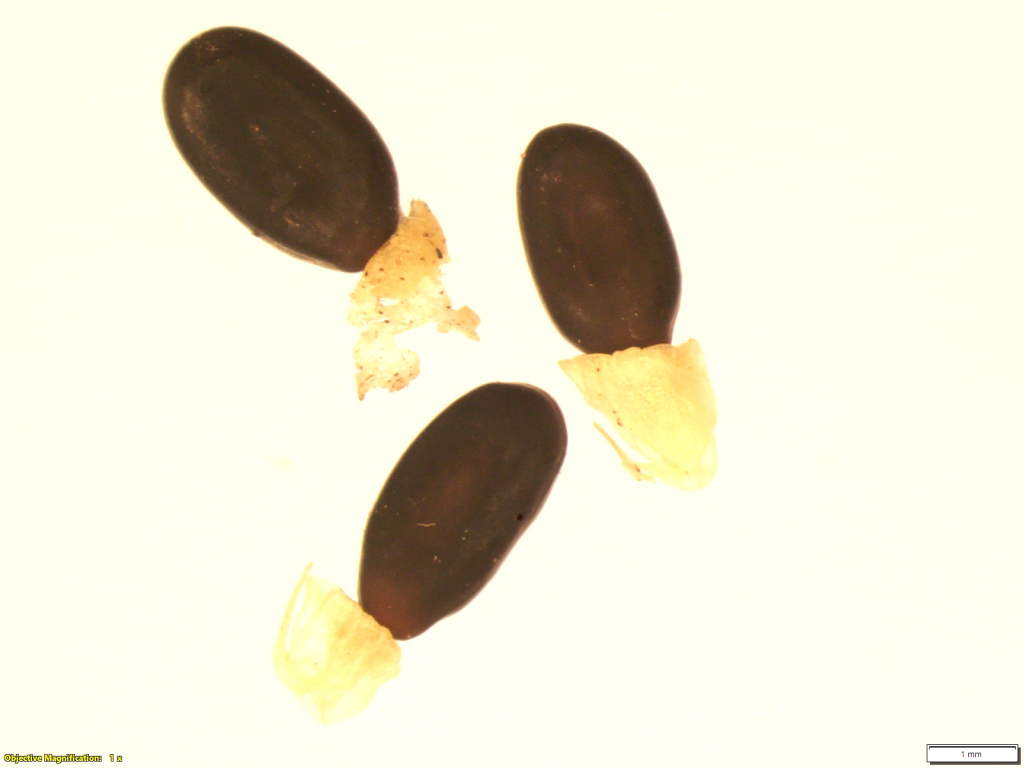Acacia simmonsiana
O'Leary & MaslinBushy, spreading shrub to 2 m high; branchlets angled or flattened apically, glabrous. Phyllodes oblanceolate, sometimes narrowly elliptic, mostly 1.5–5 cm long, 2–9 mm wide, slightly curved, sometimes straight, glabrous, obliquely apiculate-mucronate, sometimes pungent; 1-veined; stipules 2–4(–5) mm long, persistent; gland mostly 5–16 mm above pulvinus. Peduncles (2–)4–10 mm long, commonly 2 per node or sometimes on rachis to 1 mm long, glabrous; heads globular, c. 4 mm diam. and (16–)24–36-flowered, golden. Flowers 5-merous; sepals free. Pods terete, not or hardly constricted, strongly curved, to 7 cm long, 2.5–4 mm wide, firmly chartaceous to thinly crustaceous, black; seeds longitudinal, 3–4 mm long; aril terminal, conical and creamy white. Flowers Sep.–Oct.
LoM, Wim, GGr. Also SA, NSW. Restricted to the western Wimmera and Big Desert, growing in mallee communities.
Previously regarded as a variant of A. halliana. Acacia simmonsiana may be distinguished from that species by the glabrous branchlets, smaller phyllodes and heads, and terete pods that are not clearly constricted between seeds. It may also resemble A. ×grayana, which is distinguished by its hairy new shoots and peduncles, and caducous stipules.
 Spinning
Spinning


